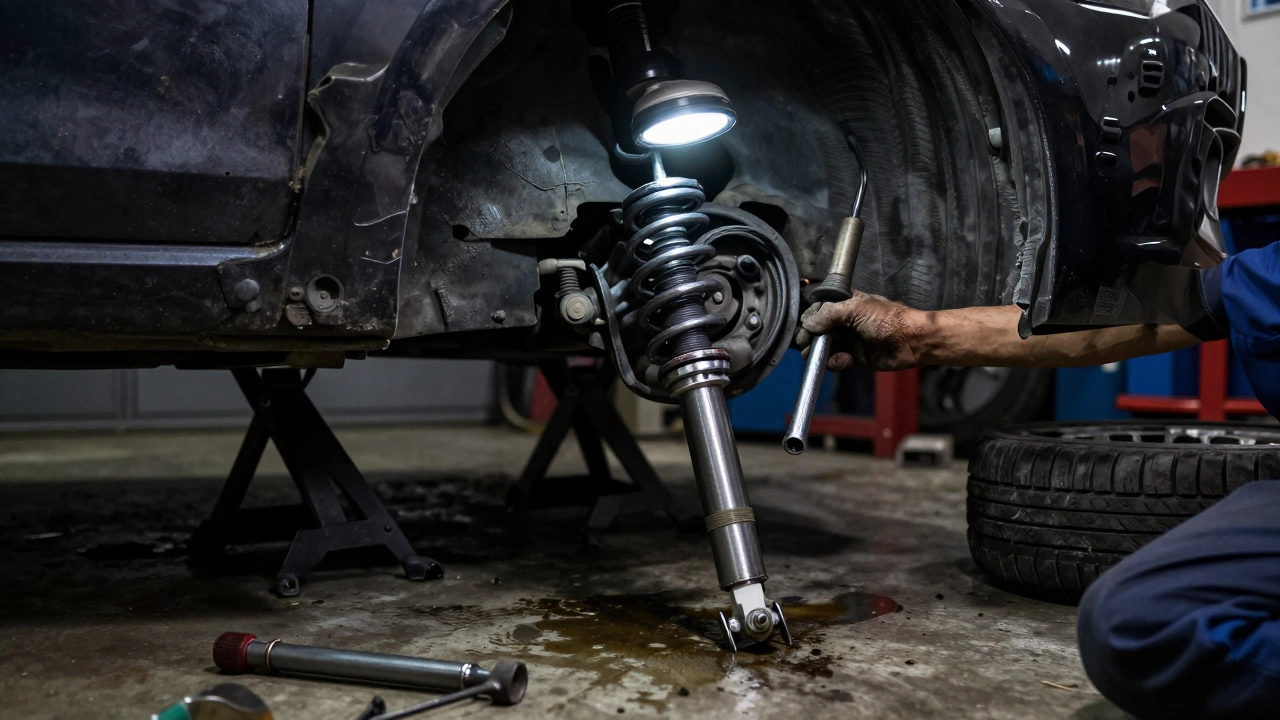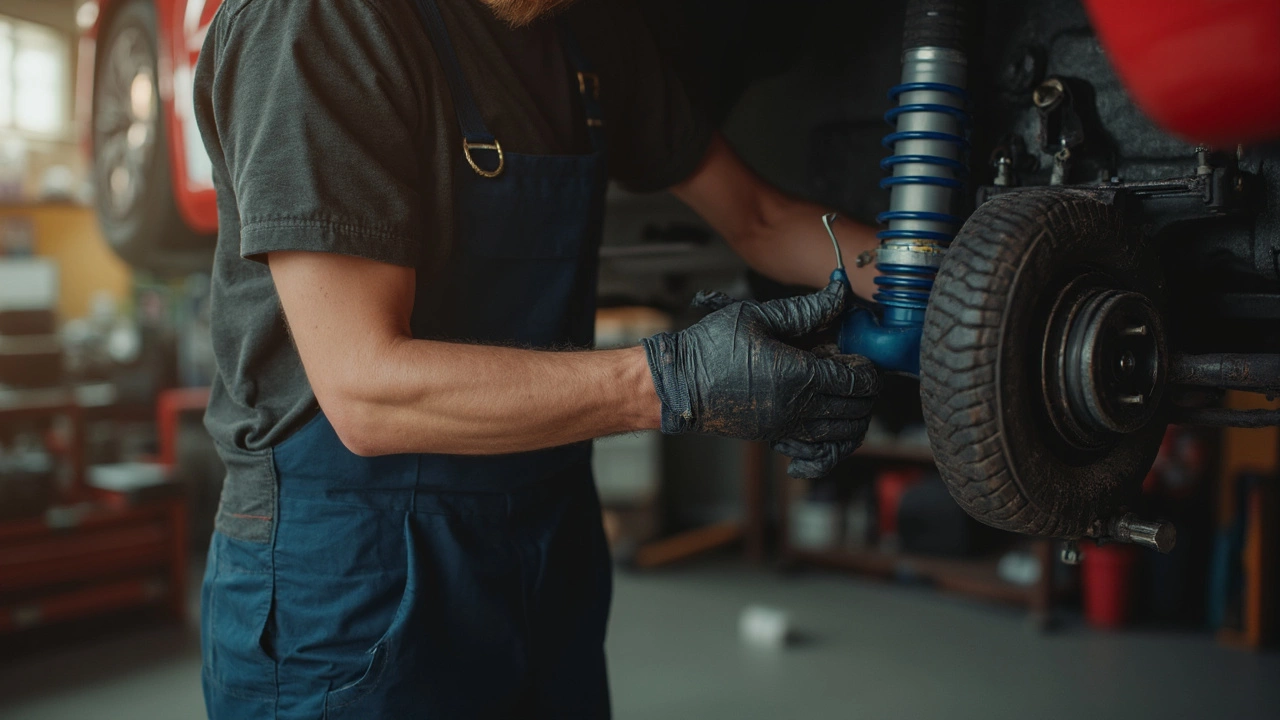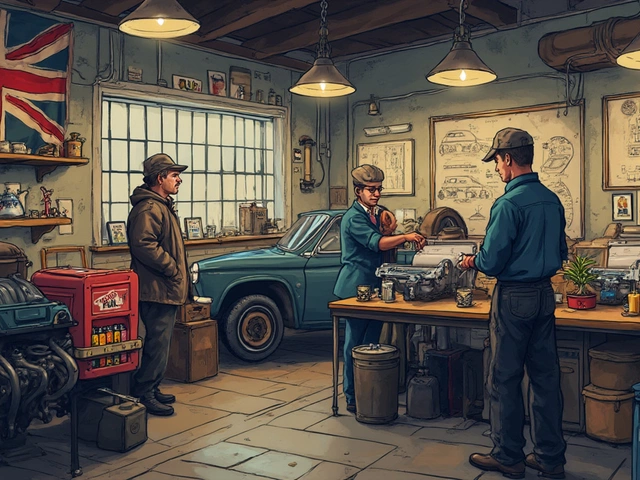Suspension Replacement: What You Need to Know
If your ride feels like a bumpy roller‑coaster, it’s probably time to look at the suspension. A healthy suspension keeps your wheels glued to the road, protects other parts, and makes every trip comfortable. Ignoring the signs can lead to costly damage, uneven tyre wear, and unsafe handling. Below we break down the most common clues, what to expect cost‑wise, and whether you can tackle the job yourself or should call in a pro.
Common Signs Your Suspension Needs Replacing
First, learn the symptoms that scream “replace me”. A deep dive into a bent suspension (see our article on bent suspension dangers) shows that uneven handling, clunking noises over bumps, and steering that drifts to one side are red flags. If you notice excessive tyre wear on one edge, that’s often a failing shock absorber or worn bushings. A car that constantly bounces after hitting a pothole usually has bad suspension shocks – a topic we covered in detail.
Other tell‑tale signs include a sagging rear end, the car nose‑diving when you brake, and a rattling sound when you turn the steering wheel at low speed. When the ride feels loose or you have to fight the steering wheel to stay straight, the suspension geometry is likely out of alignment. All these issues point to components that need replacement, such as struts, coil springs, or control arms.
DIY vs Professional Replacement: What’s Best
Deciding whether to roll up your sleeves or book a local garage depends on your tools, experience, and the extent of the damage. Simple bolt‑on parts like rear shocks can be swapped with a basic toolkit and a jack. Our guide on fixing bad suspension gives a step‑by‑step on removing and fitting new shocks, checking for leaks, and tightening torque specs.
However, more involved jobs – like replacing a bent suspension arm or fixing a broken strut mount – often need a press, alignment equipment, and safety cages. A professional can also run a full wheel alignment after the work, which is essential to prevent uneven tyre wear and handling problems. The cost difference is noticeable: DIY parts run $50‑$150 per component, while a shop will charge $200‑$400 for parts plus labor. If you’re unsure about the diagnosis, a quick inspection at Northwich Tyres Centre can save you from a wrong part purchase.
When you decide to go pro, ask for a detailed quote that includes parts, labour, and post‑repair alignment. Many local garages, including ours, offer a free suspension safety check, so you know exactly what needs fixing before you commit.
In short, listen to what your car is telling you. If you feel the signs listed above, get the suspension inspected ASAP. Replace worn components quickly, choose the right service level for your skill set, and keep your ride smooth and safe.
 4 December 2025
4 December 2025
How to Fix a Bad Suspension: Step-by-Step Guide for Safe, Smooth Driving
Learn how to diagnose and fix a bad car suspension with step-by-step guidance on replacing shocks, struts, ball joints, and bushings. Save money and stay safe with proven DIY tips and part recommendations.
 11 April 2025
11 April 2025
What to Do After Replacing Suspension: Keep Your Ride Smooth
After the thrill of replacing your car's suspension, the real work begins: ensuring everything is running like a dream. This article gives you practical guidance on what steps to take following a suspension swap, from initial checks to ongoing maintenance. We'll dive into how to spot issues early, keep everything aligned, and what changes to expect in your vehicle's performance. These tips will help prolong the life of your suspension and keep your ride smooth and comfortable.
 2 March 2025
2 March 2025
How to Determine if Your Suspension Needs Replacing
If you've ever wondered whether it's time to replace your car's suspension, you're not alone. Recognizing the signs of a worn-out suspension can prevent further damage and save you money in the long run. From strange noises on bumpy roads to uneven tire wear, being aware of these indicators ensures a smoother ride and increased vehicle longevity. Here's how you can effectively assess the state of your suspension.






0